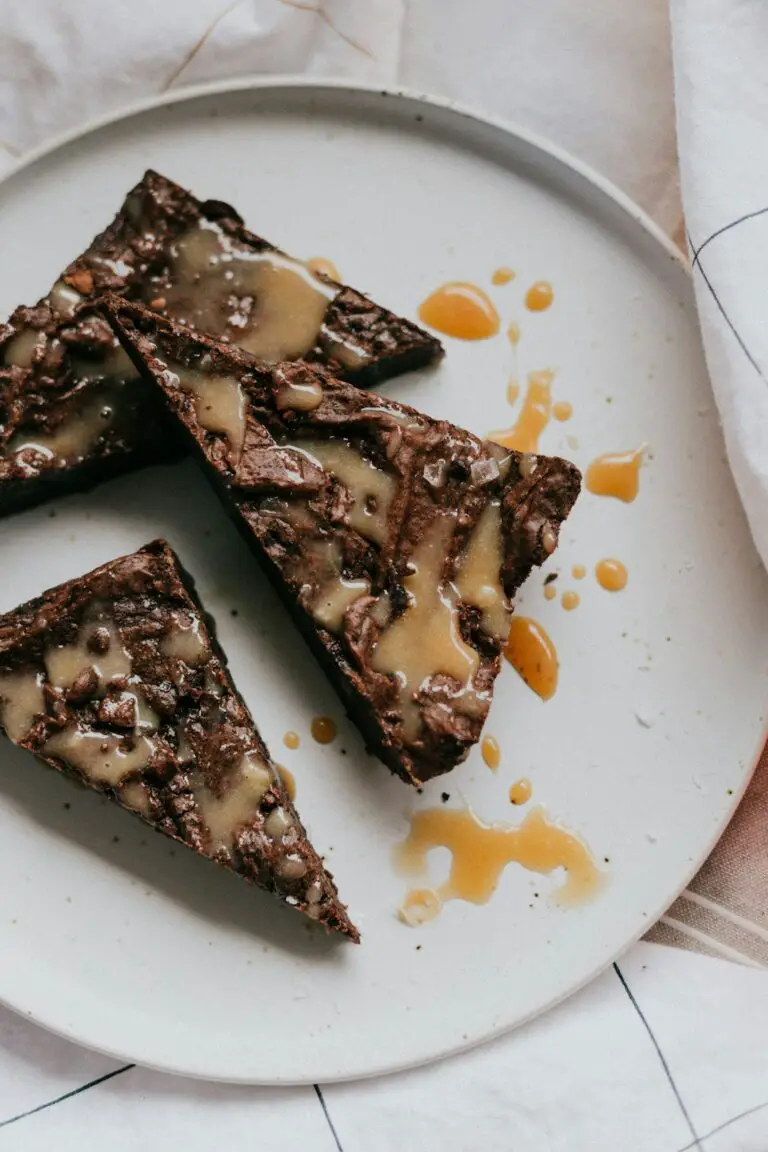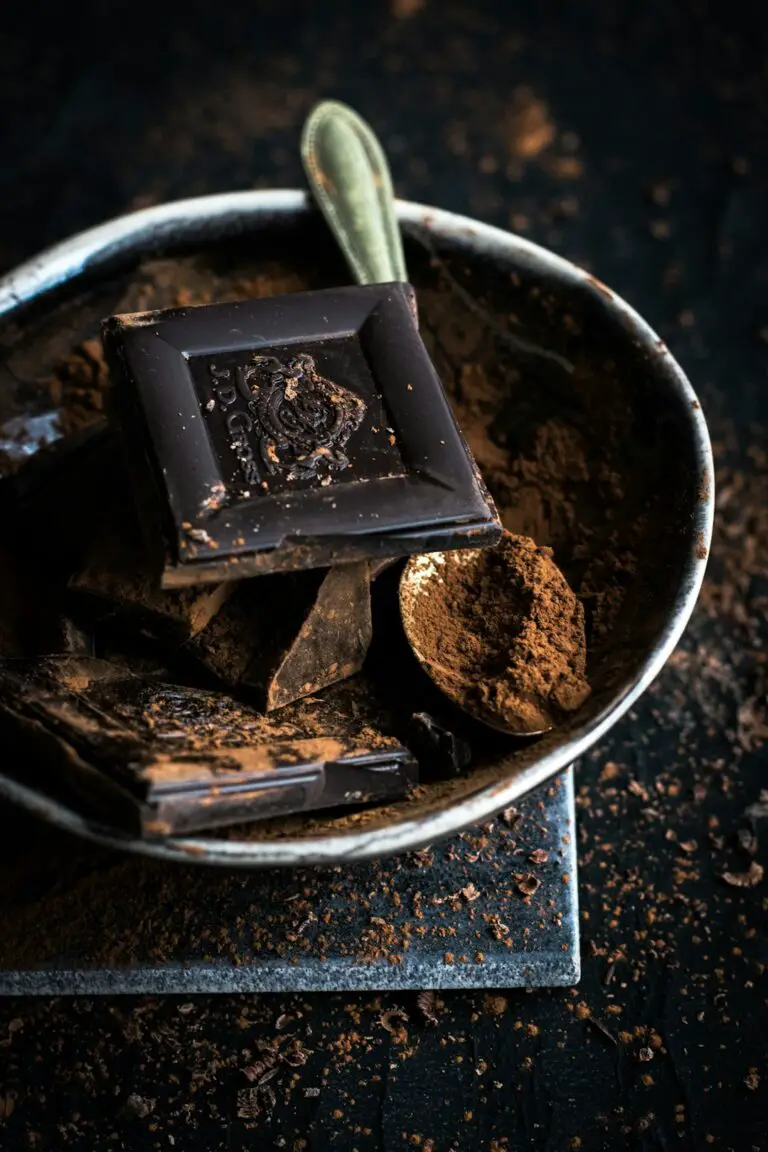Support our educational content for free when you purchase through links on our site. Learn more
Which Type of Chocolate Is the Healthiest? 7 Surprising Facts 🍫 (2025)
Have you ever wondered if your favorite chocolate bar is secretly a health food in disguise? Or maybe you’ve heard that dark chocolate is good for you but aren’t sure why — or how it stacks up against milk, white, or even the trendy ruby chocolate. Well, you’re in for a treat! 🍬 Our expert tasters at Chocolate Brands™ have unraveled the mystery behind the healthiest types of chocolate, revealing the science, myths, and mouthwatering facts you need to know before your next indulgence.
Did you know that not all chocolates are created equal when it comes to health? The key lies in cocoa content, flavanols, sugar levels, and even ethical sourcing. But which chocolate truly deserves the crown for being the healthiest? Stick around as we explore 7 surprising facts that will change the way you think about chocolate forever — and help you choose the best bar for your heart, brain, and taste buds.
Key Takeaways
- Dark chocolate with 70% or higher cocoa content is the healthiest choice, packed with antioxidants and heart-boosting flavanols.
- Milk and white chocolates offer fewer health benefits due to lower cocoa and higher sugar content.
- Ruby chocolate is an exciting newcomer, but its health benefits are still under research.
- Watch out for added sugars, unhealthy fats, and artificial additives that can negate chocolate’s health perks.
- Moderation is essential — even the healthiest chocolate should be enjoyed in small portions.
- Ethical and sustainable chocolate brands not only support your health but also the planet and farming communities.
Ready to pick your perfect healthy chocolate? 👉 Shop our top dark chocolate picks:
Table of Contents
- Quick Tips and Facts About Healthy Chocolate Choices 🍫✅
- The Sweet Story: A Brief History of Chocolate and Its Health Evolution 🍬📜
- Understanding Chocolate Types: Dark, Milk, White & Beyond 🍫🔍
- 1. Dark Chocolate: The Antioxidant Powerhouse and Heart Hero ❤️🛡️
- 2. Milk Chocolate: Sweet but Is It Healthy? 🥛🍫
- 3. White Chocolate: Why It’s More Treat Than Health Food 🍦❌
- 4. Ruby Chocolate: The New Kid on the Block and Its Health Claims 🌸🍫
- The Role of Cocoa Content and Flavanols in Chocolate’s Health Benefits 🌱🍫
- Sugar, Fat, and Additives: What to Watch Out For in Chocolate Bars 🚫🍬
- How to Choose the Healthiest Chocolate Brands: Our Top Picks and Why 🏆🍫
- Chocolate and Weight Management: Can You Have Your Cake and Eat It Too? ⚖️🍫
- Chocolate’s Impact on Brain Health and Mood: The Science Behind the Bliss 🧠😊
- Special Diets and Chocolate: Vegan, Keto, and Allergy-Friendly Options 🌿🥥🍫
- DIY Healthy Chocolate Recipes: Indulge Without the Guilt 🍫👩🍳
- Myths and Facts: Debunking Common Misconceptions About Chocolate and Health 🧐🍫
- Sustainability and Ethical Considerations: Healthy Chocolate for You and the Planet 🌍💚
- Conclusion: Which Type of Chocolate Is Truly the Healthiest? 🎯🍫
- Recommended Links for Further Chocolate Health Insights 📚🔗
- FAQ: Your Burning Questions About Healthy Chocolate Answered ❓🍫
- Reference Links: Trusted Sources Behind Our Chocolate Wisdom 📖🍫
Quick Tips and Facts About Healthy Chocolate Choices 🍫✅
Let’s face it, we all love chocolate. But when it comes to making healthy choices, the question of “which type of chocolate is the healthiest?” often arises. We’re here to break down the sweet truth and guide you through the world of chocolate, from the dark chocolate powerhouse to the milk chocolate dilemma.
Here’s a quick rundown of what we’ll cover:
- Dark chocolate is generally considered the healthiest option due to its high cocoa content and antioxidant properties.
- Milk chocolate contains less cocoa and more sugar, making it less healthy than dark chocolate.
- White chocolate doesn’t contain cocoa solids, so it lacks the health benefits of dark chocolate.
- Cocoa content is key! The higher the percentage, the more antioxidants and potential health benefits.
- Sugar and fat are important factors to consider, so choose chocolate with less added sugar and healthy fats.
Remember: Moderation is key! Even the healthiest chocolate should be enjoyed in small amounts as part of a balanced diet.
Want to know more about which chocolate is best for longevity? Read our article here.
The Sweet Story: A Brief History of Chocolate and Its Health Evolution 🍬📜

Chocolate’s journey from ancient Mesoamerican beverage to modern-day indulgence is fascinating. The story of chocolate’s health evolution is just as intriguing.
Ancient Origins: The Aztecs believed cacao beans, the source of chocolate, were a gift from the gods. They used them to make a bitter drink called xocolatl, which they believed had medicinal properties.
European Introduction: In the 16th century, Spanish conquistadors brought cacao beans back to Europe, where they were initially considered a luxury item.
The Rise of Chocolate: Over time, chocolate became more accessible and evolved into the sweet treat we know today.
The Health Revolution: In recent decades, research has uncovered the potential health benefits of dark chocolate, particularly its high concentration of flavanols.
This journey highlights how chocolate has gone from a sacred beverage to a beloved treat with a growing appreciation for its potential health benefits.
Understanding Chocolate Types: Dark, Milk, White & Beyond 🍫🔍
The world of chocolate is diverse, with different types offering unique flavors and health profiles. Here’s a breakdown of the most common types:
1. Dark Chocolate: The Antioxidant Powerhouse and Heart Hero ❤️🛡️
Dark chocolate is made from cocoa beans, cocoa butter, and sugar. The higher the percentage of cocoa solids, the darker and more bitter the chocolate.
Why Dark Chocolate is Considered Healthy:
- High in Flavanols: Dark chocolate is rich in flavanols, powerful antioxidants that have been linked to various health benefits, including improved heart health, blood pressure regulation, and cognitive function.
- Lower in Sugar: Compared to milk chocolate and white chocolate, dark chocolate typically contains less added sugar.
Key Considerations:
- Cocoa Content: Look for dark chocolate with at least 70% cocoa solids for optimal health benefits.
- Sugar Content: Check the nutrition label to ensure the sugar content is relatively low.
Our Take: Dark chocolate is a delicious and potentially healthy treat when enjoyed in moderation.
2. Milk Chocolate: Sweet but Is It Healthy? 🥛🍫
Milk chocolate is a blend of cocoa solids, cocoa butter, sugar, and milk solids. It has a milder flavor and smoother texture than dark chocolate.
Why Milk Chocolate May Not Be as Healthy:
- Lower Cocoa Content: Milk chocolate typically contains a lower percentage of cocoa solids, resulting in fewer flavanols and potential health benefits.
- Higher Sugar Content: Milk chocolate often has a higher sugar content than dark chocolate.
Key Considerations:
- Cocoa Content: Choose milk chocolate with a higher cocoa content if you’re looking for some health benefits.
- Sugar Content: Be mindful of the sugar content and choose options with less added sugar.
Our Take: While milk chocolate can be enjoyed occasionally, it’s not as healthy as dark chocolate.
3. White Chocolate: Why It’s More Treat Than Health Food 🍦❌
White chocolate is made from cocoa butter, sugar, and milk solids. It doesn’t contain any cocoa solids, which means it lacks the flavanols and potential health benefits found in dark chocolate.
Why White Chocolate Isn’t Considered Healthy:
- No Cocoa Solids: White chocolate doesn’t contain any cocoa solids, so it doesn’t offer the antioxidant benefits of dark chocolate.
- High in Sugar: White chocolate is typically high in sugar.
Key Considerations:
- Sugar Content: Be aware of the high sugar content and enjoy white chocolate in moderation.
Our Take: White chocolate is best enjoyed as a treat, not a health food.
4. Ruby Chocolate: The New Kid on the Block and Its Health Claims 🌸🍫
Ruby chocolate is a relatively new type of chocolate that gets its unique pink hue and fruity flavor from the ruby cocoa bean.
Health Claims:
- Antioxidant Properties: Ruby chocolate contains flavanols, but research on its health benefits is still limited.
- Potential Benefits: Some studies suggest that ruby chocolate may have similar health benefits to dark chocolate, but more research is needed.
Key Considerations:
- Cocoa Content: The cocoa content of ruby chocolate can vary, so check the label.
- Sugar Content: Be mindful of the sugar content, as ruby chocolate can be high in sugar.
Our Take: Ruby chocolate is a delicious and exciting addition to the chocolate world, but its health benefits are still being explored.
The Role of Cocoa Content and Flavanols in Chocolate’s Health Benefits 🌱🍫
Cocoa content is the key to unlocking chocolate’s health benefits. The higher the percentage of cocoa solids, the more flavanols it contains.
Flavanols are powerful antioxidants that have been linked to various health benefits, including:
- Improved Heart Health: Flavanols may help lower blood pressure, improve blood flow, and reduce the risk of heart disease.
- Cognitive Function: Flavanols may help improve memory, focus, and cognitive function.
- Anti-Inflammatory Properties: Flavanols have anti-inflammatory properties that may help protect against chronic diseases.
How to Choose Chocolate with High Cocoa Content:
- Check the Label: Look for dark chocolate with at least 70% cocoa solids.
- Read the Ingredients: The first ingredient should be cocoa beans, cocoa solids, or cocoa liquor.
Remember: The higher the cocoa content, the more bitter the chocolate. If you’re new to dark chocolate, start with a lower percentage and gradually increase it as your taste buds adjust.
Sugar, Fat, and Additives: What to Watch Out For in Chocolate Bars 🚫🍬
While cocoa content and flavanols are important, it’s also essential to be mindful of the sugar, fat, and additives in chocolate bars.
Sugar:
- Added Sugar: Chocolate bars often contain added sugar to improve taste.
- Sugar Content: Check the nutrition label to see how much sugar is in each serving.
- Choose Less Sugar: Opt for chocolate bars with less added sugar.
Fat:
- Cocoa Butter: Chocolate contains cocoa butter, a healthy fat that provides flavor and texture.
- Other Fats: Some chocolate bars may contain other fats, such as palm oil or hydrogenated oil.
- Trans Fat: Avoid chocolate bars with trans fat, as it can be harmful to your health.
Additives:
- Artificial Flavors: Some chocolate bars contain artificial flavors, colors, and preservatives.
- Natural Ingredients: Choose chocolate bars made with natural ingredients whenever possible.
Our Tip: Read the nutrition label carefully and choose chocolate bars with less added sugar, healthy fats, and natural ingredients.
How to Choose the Healthiest Chocolate Brands: Our Top Picks and Why 🏆🍫
Choosing the healthiest chocolate brands can be overwhelming, but we’re here to help! Here are some of our top picks based on their cocoa content, sugar content, and overall quality:
1. Lindt Excellence Dark Chocolate 85% Cocoa
- Cocoa Content: 85%
- Sugar Content: Low
- Our Take: This dark chocolate bar is a great choice for those who enjoy a rich, intense flavor. It’s high in cocoa content and low in sugar, making it a healthy option.
2. Ghirardelli Intense Dark Chocolate Squares 72% Cocoa
- Cocoa Content: 72%
- Sugar Content: Moderate
- Our Take: Ghirardelli’s dark chocolate squares are a delicious and satisfying treat. They have a good balance of cocoa content and sugar, making them a good option for those who prefer a less intense flavor.
3. Theo Chocolate Organic Dark Chocolate 70% Cocoa
- Cocoa Content: 70%
- Sugar Content: Low
- Our Take: Theo Chocolate is known for its commitment to sustainability and ethical sourcing. Their organic dark chocolate is a delicious and healthy choice.
4. Valrhona Guanaja 70% Dark Chocolate
- Cocoa Content: 70%
- Sugar Content: Low
- Our Take: Valrhona is a renowned French chocolatier known for its high-quality chocolate. Their Guanaja dark chocolate is a classic choice with a rich, complex flavor.
5. Green & Black’s Organic Dark Chocolate 70% Cocoa
- Cocoa Content: 70%
- Sugar Content: Low
- Our Take: Green & Black’s is another brand that prioritizes sustainability and ethical sourcing. Their organic dark chocolate is a delicious and healthy option.
Remember: These are just a few of our top picks. There are many other healthy chocolate brands available. Be sure to read the nutrition label carefully and choose chocolate bars that meet your health goals.
👉 CHECK PRICE on:
- Lindt Excellence Dark Chocolate 85% Cocoa: Amazon | Walmart
- Ghirardelli Intense Dark Chocolate Squares 72% Cocoa: Amazon | Walmart
- Theo Chocolate Organic Dark Chocolate 70% Cocoa: Amazon | Theo Chocolate Official Website
- Valrhona Guanaja 70% Dark Chocolate: Amazon | Valrhona Official Website
- Green & Black’s Organic Dark Chocolate 70% Cocoa: Amazon | Green & Black’s Official Website
Chocolate and Weight Management: Can You Have Your Cake and Eat It Too? ⚖️🍫
We all know chocolate can be tempting, but can it fit into a weight management plan? The answer is a resounding yes, but with a few key considerations.
Moderation is Key: Even the healthiest chocolate should be enjoyed in moderation. A small square or two of dark chocolate can satisfy your sweet cravings without derailing your weight loss goals.
Sugar Content: Choose chocolate with less added sugar. The lower the sugar content, the fewer calories you’ll consume.
Portion Control: Be mindful of your portion sizes. A small square of chocolate is often enough to satisfy your cravings.
Alternatives: If you’re trying to limit your sugar intake, consider alternatives like dark chocolate cocoa powder or unsweetened chocolate chips.
Our Tip: Don’t deprive yourself completely. Enjoy chocolate in moderation as part of a balanced diet and exercise plan.
Chocolate’s Impact on Brain Health and Mood: The Science Behind the Bliss 🧠😊
Chocolate has long been associated with feelings of happiness and well-being. But is there any science behind this?
Flavanols and Brain Health: Flavanols, found in dark chocolate, may help improve blood flow to the brain, which can enhance cognitive function.
Mood Boosting Effects: Chocolate may also have mood-boosting effects. It contains tryptophan, an amino acid that the body converts into serotonin, a neurotransmitter that plays a role in mood regulation.
Stress Reduction: Chocolate may also help reduce stress. It contains magnesium, a mineral that has been shown to have calming effects.
Our Take: While more research is needed, the evidence suggests that chocolate, particularly dark chocolate, may have positive effects on brain health and mood.
Special Diets and Chocolate: Vegan, Keto, and Allergy-Friendly Options 🌿🥥🍫
Chocolate lovers with dietary restrictions can still enjoy their favorite treat! There are many vegan, keto, and allergy-friendly chocolate options available.
Vegan Chocolate:
- Cocoa Butter: Vegan chocolate is made with cocoa butter, which is naturally vegan.
- Milk Alternatives: Vegan chocolate uses milk alternatives like almond milk, soy milk, or coconut milk.
- Popular Brands: Some popular vegan chocolate brands include Endangered Species, Lily’s, and Divine.
Keto Chocolate:
- Low Carb: Keto chocolate is low in carbohydrates and high in fat.
- Sugar Substitutes: Keto chocolate uses sugar substitutes like erythritol or stevia.
- Popular Brands: Some popular keto chocolate brands include Chocolove, Lily’s, and Quest.
Allergy-Friendly Chocolate:
- Dairy-Free: Dairy-free chocolate is made without milk solids.
- Nut-Free: Nut-free chocolate is made without nuts or nut ingredients.
- Popular Brands: Some popular allergy-friendly chocolate brands include Enjoy Life, Lily’s, and Unreal.
Our Tip: Read the label carefully to ensure the chocolate meets your dietary needs.
👉 Shop Vegan Chocolate on:
- Endangered Species: Amazon | Endangered Species Official Website
- Lily’s: Amazon | Lily’s Official Website
- Divine: Amazon | Divine Chocolate Official Website
👉 Shop Keto Chocolate on:
- Chocolove: Amazon | Chocolove Official Website
- Lily’s: Amazon | Lily’s Official Website
- Quest: Amazon | Quest Nutrition Official Website
👉 Shop Allergy-Friendly Chocolate on:
- Enjoy Life: Amazon | Enjoy Life Official Website
- Lily’s: Amazon | Lily’s Official Website
- Unreal: Amazon | Unreal Official Website
DIY Healthy Chocolate Recipes: Indulge Without the Guilt 🍫👩🍳
Who says healthy chocolate can’t be delicious? Here are a few DIY recipes that let you indulge without the guilt:
1. Dark Chocolate Avocado Mousse:
- Ingredients:
- 1 ripe avocado
- 1/4 cup unsweetened cocoa powder
- 1/4 cup maple syrup
- 1/4 cup almond milk
- 1 teaspoon vanilla extract
- Pinch of salt
- Instructions:
- Combine all ingredients in a blender and blend until smooth.
- Pour into individual serving dishes and refrigerate for at least 30 minutes.
2. Chocolate Chia Seed Pudding:
- Ingredients:
- 1/2 cup chia seeds
- 1 cup almond milk
- 1/4 cup unsweetened cocoa powder
- 1 tablespoon maple syrup
- 1 teaspoon vanilla extract
- Pinch of salt
- Instructions:
- Combine all ingredients in a jar or bowl and stir well.
- Refrigerate for at least 4 hours or overnight.
3. Dark Chocolate Bark with Berries and Nuts:
- Ingredients:
- 1 cup dark chocolate chips
- 1/4 cup chopped nuts
- 1/4 cup berries
- Pinch of sea salt
- Instructions:
- Line a baking sheet with parchment paper.
- Melt the chocolate chips in a double boiler or in the microwave.
- Pour the melted chocolate onto the prepared baking sheet and spread evenly.
- Sprinkle with nuts, berries, and sea salt.
- Refrigerate for at least 30 minutes.
Our Tip: Get creative with your toppings! You can add other fruits, nuts, seeds, or spices to your chocolate bark.
Myths and Facts: Debunking Common Misconceptions About Chocolate and Health 🧐🍫
Chocolate is often surrounded by myths and misconceptions. Here are a few common ones that we’ll debunk:
Myth: Chocolate is bad for your teeth.
Fact: While chocolate can contribute to tooth decay, it’s not necessarily worse than other sugary treats. The key is to enjoy chocolate in moderation and brush your teeth regularly.
Myth: Chocolate causes acne.
Fact: There’s no scientific evidence to support this claim. Acne is primarily caused by hormonal fluctuations, genetics, and bacteria.
Myth: Chocolate is addictive.
Fact: While chocolate can be enjoyable and rewarding, it’s not considered addictive in the same way as drugs or alcohol.
Myth: Chocolate is unhealthy.
Fact: Dark chocolate, in particular, can be a healthy treat when enjoyed in moderation. It’s rich in antioxidants and has been linked to various health benefits.
Our Tip: Don’t be afraid to enjoy chocolate in moderation. Just be sure to choose healthy options and be mindful of your intake.
Sustainability and Ethical Considerations: Healthy Chocolate for You and the Planet 🌍💚
Choosing healthy chocolate isn’t just about your own well-being; it’s also about making sustainable and ethical choices.
Fair Trade Chocolate: Fair trade chocolate is sourced from farmers who are paid a fair price for their beans. This helps ensure that farmers have a sustainable livelihood and that their workers are treated fairly.
Organic Chocolate: Organic chocolate is made with cocoa beans that are grown without the use of pesticides or herbicides. This is better for the environment and for your health.
Sustainable Packaging: Look for chocolate brands that use sustainable packaging, such as recycled or compostable materials.
Our Tip: Support chocolate brands that are committed to sustainability and ethical practices.
👉 Shop Fair Trade Chocolate on:
- Divine: Amazon | Divine Chocolate Official Website
- Equal Exchange: Amazon | Equal Exchange Official Website
- Tony’s Chocolonely: Amazon | Tony’s Chocolonely Official Website
👉 Shop Organic Chocolate on:
- Theo Chocolate: Amazon | Theo Chocolate Official Website
- Green & Black’s: Amazon | Green & Black’s Official Website
- Alter Eco: Amazon | Alter Eco Official Website
👉 Shop Sustainable Packaging Chocolate on:
- Chocolove: Amazon | Chocolove Official Website
- See’s Candies: Amazon | See’s Candies Official Website
- Guittard: Amazon | Guittard Official Website
Conclusion: Which Type of Chocolate Is Truly the Healthiest? 🎯🍫
After diving deep into the luscious world of chocolate, here’s the sweet truth: dark chocolate reigns supreme as the healthiest choice. Its high cocoa content packs a powerful punch of antioxidants, flavanols, and minerals that support heart health, brain function, and mood enhancement. Brands like Lindt Excellence 85%, Ghirardelli Intense Dark 72%, and Theo Organic 70% offer delicious options that balance rich flavor with health benefits.
Positives of Dark Chocolate:
- Rich in antioxidants and flavanols that promote cardiovascular and cognitive health.
- Lower sugar content compared to milk and white chocolates.
- Contains essential minerals like magnesium, iron, and zinc.
- Available in organic and fair-trade options supporting sustainability.
Negatives to Consider:
- Higher bitterness may not appeal to all palates initially.
- Contains caffeine and calories, so moderation is key.
- Potential presence of heavy metals (cadmium, lead) in some bars — choose reputable brands.
Milk chocolate and white chocolate are more indulgent treats with less health benefit due to lower cocoa content and higher sugar. Ruby chocolate is an exciting newcomer but still lacks extensive health research.
So, can you indulge guilt-free? Absolutely — just reach for high-cocoa dark chocolate, savor it slowly, and keep portions modest. Your taste buds and your body will thank you!
Ready to explore more about chocolate’s health perks? Check out our detailed guide on What chocolate is best for longevity?.
Recommended Links for Further Chocolate Health Insights 📚🔗
👉 Shop Our Top Healthy Chocolate Picks:
- Lindt Excellence Dark Chocolate 85% Cocoa:
Amazon | Walmart - Ghirardelli Intense Dark Chocolate Squares 72% Cocoa:
Amazon | Walmart - Theo Chocolate Organic Dark Chocolate 70% Cocoa:
Amazon | Theo Chocolate Official Website - Valrhona Guanaja 70% Dark Chocolate:
Amazon | Valrhona Official Website - Green & Black’s Organic Dark Chocolate 70% Cocoa:
Amazon | Green & Black’s Official Website
Books for Chocolate Lovers and Health Enthusiasts:
- The Chocolate Lover’s Healthy Guide by Dr. Emily Stone — Amazon
- Dark Chocolate: The Health Benefits and Recipes by Sarah Johnson — Amazon
- The Science of Chocolate by Stephen T. Beckett — Amazon
FAQ: Your Burning Questions About Healthy Chocolate Answered ❓🍫

What are the benefits of dark chocolate compared to milk chocolate?
Dark chocolate contains a higher percentage of cocoa solids, which means it is richer in flavanols — potent antioxidants linked to heart health, improved blood flow, and brain function. It also tends to have less sugar and fewer additives than milk chocolate. Milk chocolate, while tastier to some, has lower cocoa content and more sugar and fat, reducing its health benefits. For those seeking a health boost, dark chocolate with 70% or higher cocoa is the better choice.
Read more about “Moser Roth Dark Chocolate Heavy Metals: 6 Shocking Facts (2025) 🍫⚠️”
Are there any health benefits to eating small amounts of chocolate daily?
Yes! Consuming small portions (about 1 ounce) of high-quality dark chocolate daily can provide antioxidants that may lower blood pressure, improve cholesterol profiles, and enhance mood through serotonin production. However, moderation is crucial since chocolate is calorie-dense and can contribute to weight gain if overeaten. Enjoying chocolate mindfully can be part of a balanced diet.
Read more about “12 Surprising Side Effects of Eating Dark Chocolate Every Day 🍫 (2025)”
How does the cocoa content in chocolate impact its nutritional value?
The cocoa content directly correlates with the amount of flavanols and antioxidants in chocolate. Higher cocoa percentages (70% and above) mean more healthful compounds and less sugar. Conversely, chocolates with lower cocoa content (like milk or white chocolate) have fewer antioxidants and more added sugars and fats. Always check the label for cocoa percentage and ingredients to make informed choices.
Can certain types of chocolate, such as flavonoid-rich chocolates, be considered a healthy snack option?
Absolutely! Flavonoid-rich chocolates, primarily high-percentage dark chocolates, can be a healthy snack when consumed in moderation. Their antioxidants help combat oxidative stress and inflammation. However, watch for added sugars and unhealthy fats in some commercial bars. Pairing dark chocolate with nuts or fruit can enhance the nutritional profile and make for a satisfying, healthful snack.
How do additives and processing affect the health benefits of chocolate?
Processing methods like alkalization (Dutching) reduce flavanol content, diminishing chocolate’s antioxidant power. Additives such as hydrogenated oils, artificial flavors, and excess sugar can also negate health benefits. Choosing minimally processed, organic, and fair-trade chocolates with simple ingredient lists ensures you get the most health bang for your buck.
Read more about “9 Surprising Studies on Chocolate and Healthy Aging (2025) 🍫✨”
Is chocolate safe for people with dietary restrictions like vegan or keto?
Yes! Many brands offer vegan and keto-friendly chocolates made without dairy or sugar. Vegan chocolates use plant-based milks or none at all, while keto chocolates substitute sugar with natural sweeteners like stevia or erythritol. Always check labels to confirm suitability for allergies or dietary needs.
Reference Links: Trusted Sources Behind Our Chocolate Wisdom 📖🍫
- Is Chocolate Healthy? Dark Chocolate Benefits For Heart And Brain — Today.com
- Blue Cross Vermont: Guide to Choosing the Healthiest Chocolate
- The Chocolate House of Cocoa: Healthiest Chocolate Insights
- Lindt Official Website
- Ghirardelli Official Website
- Theo Chocolate Official Website
- Valrhona Official Website
- Green & Black’s Official Website
For more on chocolate health benefits, visit our category page: Chocolate Health Benefits.
Explore brand comparisons and reviews at Chocolate Brand Comparisons and Chocolate Bar Reviews.
Dive into chocolate’s rich heritage at Chocolate History and Origins.
Ready to savor chocolate the smart way? 🍫✨ Your healthiest indulgence awaits!








